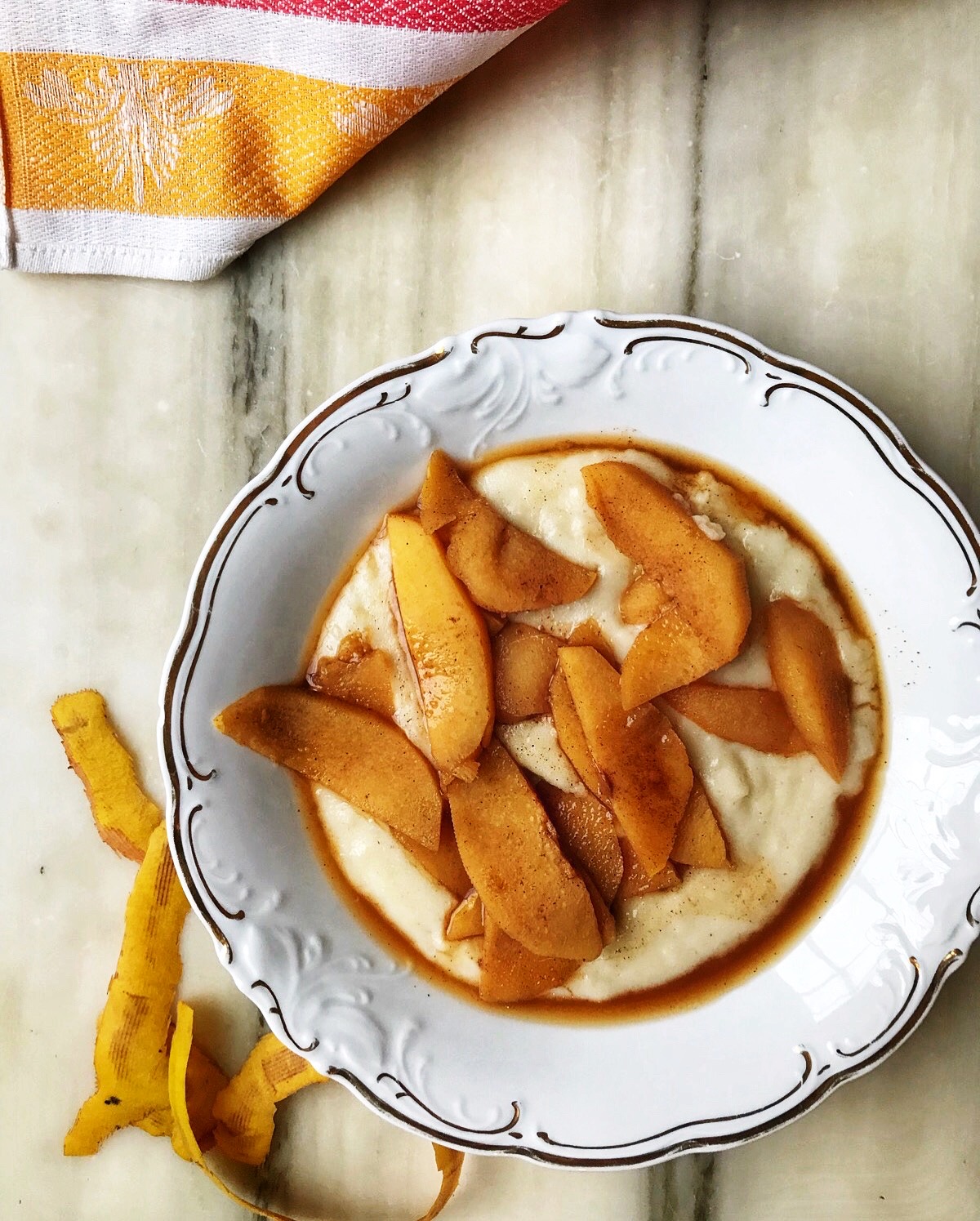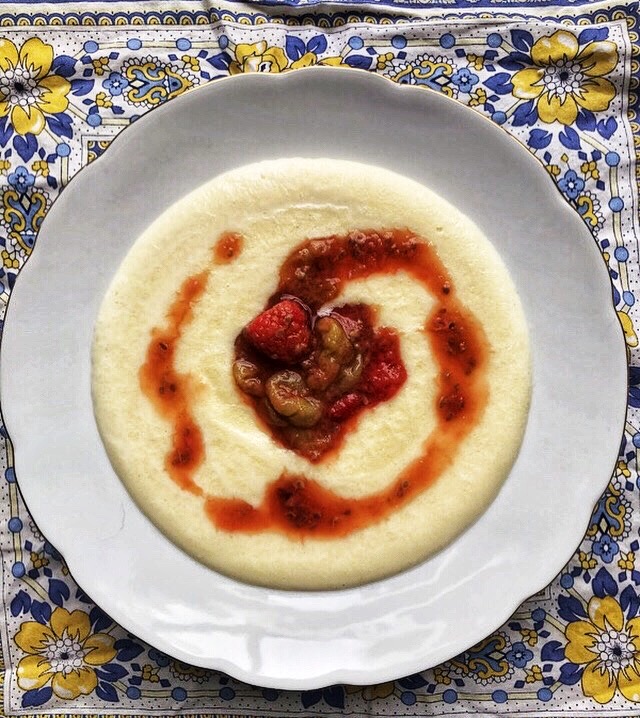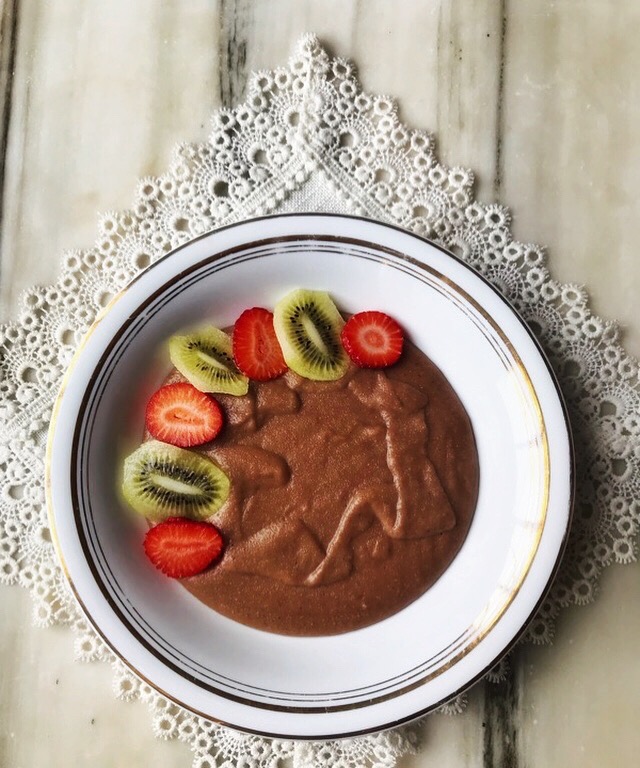
03 Jan Semolina porridge and structure in 2020
Structure:
At the start of 2020, I want to share one of my favourite breakfasts – semolina porridge – and talk about my one and only resolution for this year: structure.
It’s seems very simple but it does not come naturally for me. Introducing structure into every area of my life requires a change in the way I perceive myself. I have always thought of myself as a flighty, creative, bohemian type, so I’m going to have to change my story and allow myself to be “an organised person”. I’ve realised that when I am organized, for example when I run my supper clubs, I can relax and enjoy the process more. In a way, the structure allows for more creativity, because I don’t need to stress about the details. So how do I go about it? I’ve started the year by just thinking about structure – about what it means to me. I will never be one of those super organized people who will structure every hour of every day, every meal, every post… for some, this is normal, but I need some spontaneity and flexibility, otherwise my soul feels stilted. From experience, I know that if I take it too far with structure, I will rebel and go the other way. I need to do this carefully.
In thinking about structure, I have started to notice it in my life. I begin every day with a few sun salutations – that’s some sort of structure and I can build on it. How about finishing my day with meditation too? That sounds lovely and could be a frame for my day. When researching structure, I found that many people recommend to start planning the week on Sunday, but this does not feel right to me. I want Sunday to be my day of rest and fun and not to plan. Monday morning works better for me – I do usually choose my priorities for the week on Mondays, but other times I jump into something straight away. The planning needs to be de rigueur. Additionally, at the start of each day, over a cup of tea, I will plan three priorities for that day. Then, I need monthly priorities for the big projects. For example, my two big priorities for January are my new book and taxes. My book I will work on every single day, as that’s my number one priority. Taxes, I will dedicate one day a week to. However, when planning my week, just to say “book” as a priority is not enough, I need a more detailed goal, for example to finish or edit a chapter. When my tax deadline approaches I may need to prioritise that for a few days instead… So the structure will be set on a monthly, weekly and daily basis. It will literally take 5min to do that, so I have no excuse to not do it.
Food is a way that we structure our lives – we all eat certain meals at certain times. With fervent recipe testing in the mix, it can get a bit confusing though, so I want to be more structured in my cooking, especially since I’m pregnant. . In my first trimester, I ate too much sugar and carbs and my health has been suffered as a result. I realised that I am now craving salads. While Nusia eats most things, including plenty of fruit and veg, somehow having everything mixed up in a salad doesn’t appeal to her, but that shouldn’t mean that I don’t eat them! I can make salad every day for lunch when she’s at pre-school. This will also leave room in my tummy for recipes that I need to test. Breakfast, on the other, needs to be warm at this time of year, so porridges and kasza will set us up nicely. That brings me to semolina porridge or kasha manna.
semolina:

I often call kasza manna the “food of our ancestors” because kasza was big in Eastern Europe back in the (pre-potato) day. In fact, most civilisations started their cooking history with some kind of grainy soup. In the UK “pottage” was the predecessor of porridge, whereas in Poland various native grains were made into soups – we call them all “kasza” for short. Kasza manna is made from durum wheat semolina. You can use it to make puddings, thicken sauces and creams, as well as for a fine, creamy breakfast porridge – which is probably what it’s best known for. After a couple of minutes the kasza manna sets, so the toppings and juices (raspberry syrup is traditionally used) stay neatly on top. You can also eat it cold as a pudding.

My late babcia Ziuta would eat this every single day for breakfast. She was a staunch woman of peasant birth who came from the Mazowsze area. This is the area where Warsaw is and this is where she ended up living, but she was not a capital city sort of gal. You have to remember that before Communism most people owned small holdings and lived off the land. The sea of grey blocks that forms the outskirts of Warsaw used to be villages. My gran was therefore of the land and continued to live in this way even on the nineth floor of a concrete block. Kasza gave my Babcia her strength for the day. She needed it, especially when the lifts broke down!
I like to be creative with the flavours and toppings for my semolina porridge, so I’ve got a few suggestions for you, but the first thing we need to remember is that (whatever you see on the packet instructions) you always need to mix kasza manna with some cold water or milk first, to a smooth paste. Only then do you add it to your warm milk on the stove and allow to thicken as it cooks. The second thing is you need to stir all the time, and sometimes I even use a handwhisk, so that as it thickens, we don’t get any lumps. Thirdly, as with oat porridge, a pinch of salt is necessary.
Here are some ideas for flavours and toppings for semolina porridge:
Chocolate and spice: You can add some chocolate and spice while you are cooking the semolina. As it thickens add a tablespoon of cacao and some cardamom. Once it sets (it literally takes a minute) top with fresh fruit.
Rhubarb and rose: Always an amazing combo – add rosewater to the semolina while it’s cooking, and put honey sweetened stewed rhubarb on top once it has set.
Quince and orange blossom: Stew the quince with honey, a large pinch of cinnamon and a bit of water. Add good honey and orange blossom water to the kasza manna whilst it’s cooking for a Middle Eastern flavour.
Redcurrant – Tangy red currant works beautifully, but you need to sweeten the kasza manna with honey or sugar and I like to add a bit of vanilla too. Do this at the end of the cooking time. You can stew some of the redcurrant with sugar and water to make a syrup, but make sure you reserve some fresh ones to go on top too.

